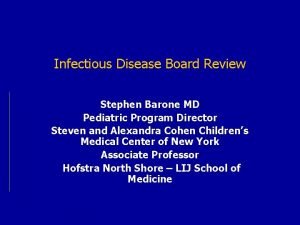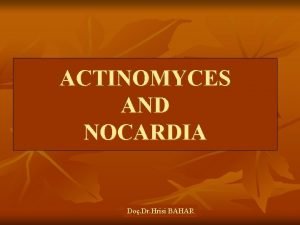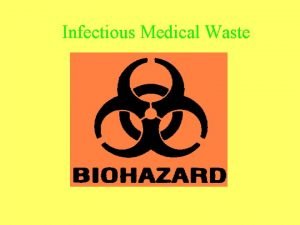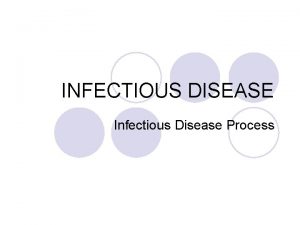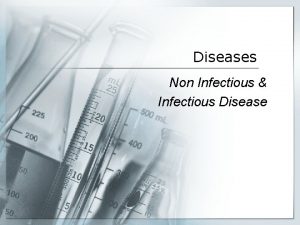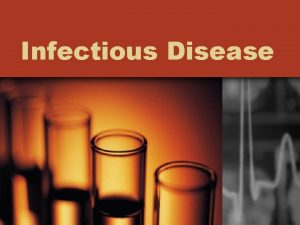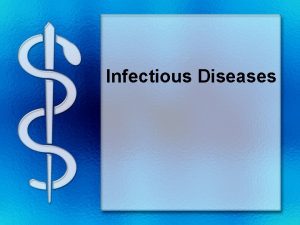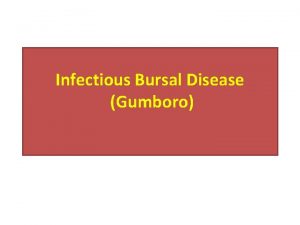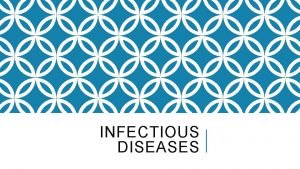INFECTIOUS DISEASE What is Infectious Disease A disease













- Slides: 13

INFECTIOUS DISEASE

What is Infectious Disease? • A disease caused by the presence of a living thing in the body.

What are Pathogens? • Organisms that cause disease.

Four Types of Pathogens… • • Bacteria Viruses Fungi Protists

BACTERIA One-celled microorganisms that cause a wide variety of diseases. Some bacteria damage cells directly, however others damage them indirectly by releasing toxins, or poisons, into your body. They are LIVING.

VIRUSES • Tiny particles, much smaller than bacteria that cannot reproduce unless they are inside living cells. The cells are damaged or destroyed in the process, releasing new viruses to infect other cells. Viruses are NONLIVING! They are particles- NOT CELLS!

FUNGI • Fungi, which include molds and yeasts, also cause some infectious diseases. Fungi grow in warm, dark, moist areas. Two examples are athlete’s foot and ringworm. They are LIVING!

PROTISTS • An organism that cannot be classified as an animal, plant, or fungus. One example is Malaria, an infection of the blood. Protists are LIVING!

How Do Pathogens Spread? • Pathogens can spread through contact with either an infected person; soil, food, or water; a contaminated object; or an infected animal.

Infected People • Direct physical contact (kissing, shaking hands, etc) • Indirect contact (sneezing, coughing, etc)

Soil, Food, Water • Some pathogens occur naturally in the environment. • Some pathogens contaminate food and water, spreading disease when drinking and eating.

Contaminated Objects • Some pathogens can survive outside a person’s body. • Contact with contaminated objects can infect a person (towels, silverware, etc).

Infected Animals • If an animal is infected with a pathogen and bites a person, it can pass the pathogen to the person. • Example: Rabies, Lyme Disease, etc.
 Stridor
Stridor Types of infection
Types of infection Infectious disease
Infectious disease Chapter 26 infectious disease prevention and control
Chapter 26 infectious disease prevention and control Hennepin county infectious disease manual
Hennepin county infectious disease manual Stages of infectious disease
Stages of infectious disease What is the smallest infectious agent
What is the smallest infectious agent Infectious disease quality controls
Infectious disease quality controls Infectious canine hepatitis in dogs
Infectious canine hepatitis in dogs Infectious stunting syndrome
Infectious stunting syndrome Mebosha
Mebosha Epidemiological triad
Epidemiological triad Infectious nucleic acid
Infectious nucleic acid Infectious canine hepatitis in dogs
Infectious canine hepatitis in dogs
